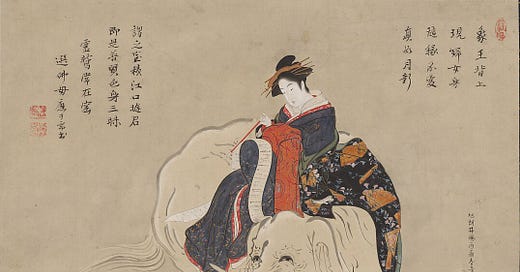Understanding the planets is the key to understanding astrology. Though signs get a lot of attention in our current culture, they really get their power and attributes from the planets that rule them, fuel them, shape them. I wrote my series on Embodying the Planets to help people bring that information into their bodies through ritual activities and what I saw as the most important attributes of each planet.
If you don’t know the basic attributes of the 7 visible planets, start there:
But here’s the thing: in charts and in our lives, planets rarely show up by themselves. A rose, for example, may be of the nature of Venus for its color, smell and association with love buts its thorns are of the nature of Mars. You may have a really sweet Cancer Moon, natally or by transit, but if it’s opposed by Saturn, you can’t get the nurturing, protecting qualities of Luna without the scarcity and struggle of Saturn.
Again and again in client consults, I find that by solely talking about the planetary combinations in someone’s chart, you can get to the heart of the foundational dynamics of their heart. And if you start looking around, you see planetary duos, specifically between two planets, show up all over astrology. Lots, or calculated points of fate, are determined via the relationship between two planets in your chart. Signs are defined by both their domicile and exaltation rulers. All fixed stars are assigned a planetary duo that reflects their nature.
By beginning to understand what it means when two planets come together, you see the relationships between them and the common ways they manifest in our mixed-up, varied lives.
In our charts, a planet is considered in combination with another when they are in the same sign, in opposing signs, or in mutual reception (a swapping of rulerships, i.e. when the Moon is in Leo and the Sun is in Cancer. Terms, exaltations and decans count here too).
So today, I begin a series exploring these planetary combinations in part because I find them so interesting. This work is heavily inspired by Austin Coppock’s “36 Dramas: Essential Planetary Relationships” Lecture from NORWAC 2022, so please check that out if you want to learn more! Going beyond his wonderful starting point, I will also include information on the decans, each of which have two planetary rulers when you consider both the Chaldean and Triplicity system, as their dynamics do a great job demonstrating what the planetary combinations look like in action. We will also be examining the fixed stars that share the same nature as this planetary combination to further our understanding.
Other uses for these combinations:
understanding mixed planetary correspondences
determining which herbs may help you if they have more than one ruler
connecting with your holy guardian angel (who is classically of the nature of two planets)
seeing your chart more clearly
attuning yourself to both planetary days and hours
P.S. If you want help understanding your own planetary combinations, my books are open for October! Book now to reacquaint yourself with your magic and destiny (no big deal).
Jupiter and the Moon: Summary
A Jupiter-Moon contact is nothing if not resourced. Almost universal amongst the traditional texts are the riches and powerful contacts Jupiter-Moon individuals have. Both of these planets are wet, and thus connective and fertile. While Jupiter, a benefic, brings steady goodness, the Moon receives his buoyant energy gladly; in the Vedic tradition, the Moon is even considered a benefic as well. But while the Moon zips through the sky in a month’s time, it takes Jupiter 12 years to traverse the whole of the zodiac. In Vedic astrology, having Jupiter and the Moon on the angles of a chart (i.e. in 1st, 4th, 7th, or 10th houses), along with a few other criterion, forms what is called a Gajakesari Yoga, or elephant-lion yoga. In his lecture on the planetary pairs, Coppock points out the slow, steadiness of the elephant, able to move unhurriedly in its chosen direction because its sheer size, makes it hard to block. Jupiter steadies and bonifies the prismatic translation of the Moon’s ever-shifting light, while Luna brings Jove back to the body and its substance.
As such, Firmicus affirms that “Jupiter and the Moon in the same sign indicate the greatest good fortune, especially if they are in the same degree”.1 Together “they bestow infinite riches and such marks of prosperity that the natives are always superior to their parents”. This pair not only bring in wealth and elevation, but that which surpasses that of the native’s parents. While the Moon brings in the family and ancestry, Jupiter demonstrates the potential for expansion, for the hope that your children’s lives are better than yours. Firmicus also notes that when the Moon “holds more degrees than Jupiter,” or is separating from his, the good fortune is lessened.2 A waning Moon may bring decrease or diminish the material riches of this combination. Valens also describes these natives as “treated well by family and children”3; the parents of Jupiter-Moon people are not resentful of their offspring’s prosperity and their own descendants also value them.
Keep reading with a 7-day free trial
Subscribe to Recent Bedroom to keep reading this post and get 7 days of free access to the full post archives.




